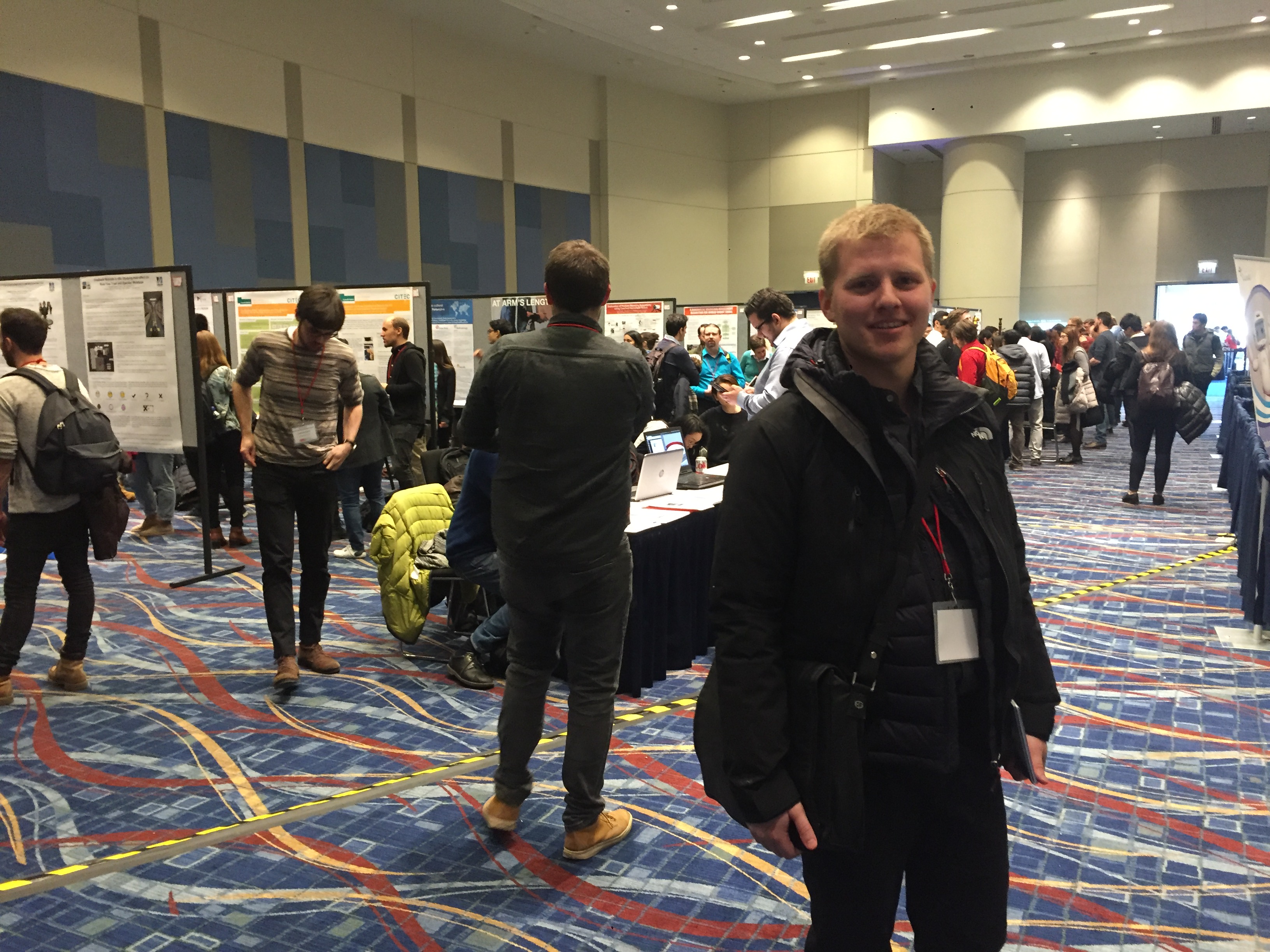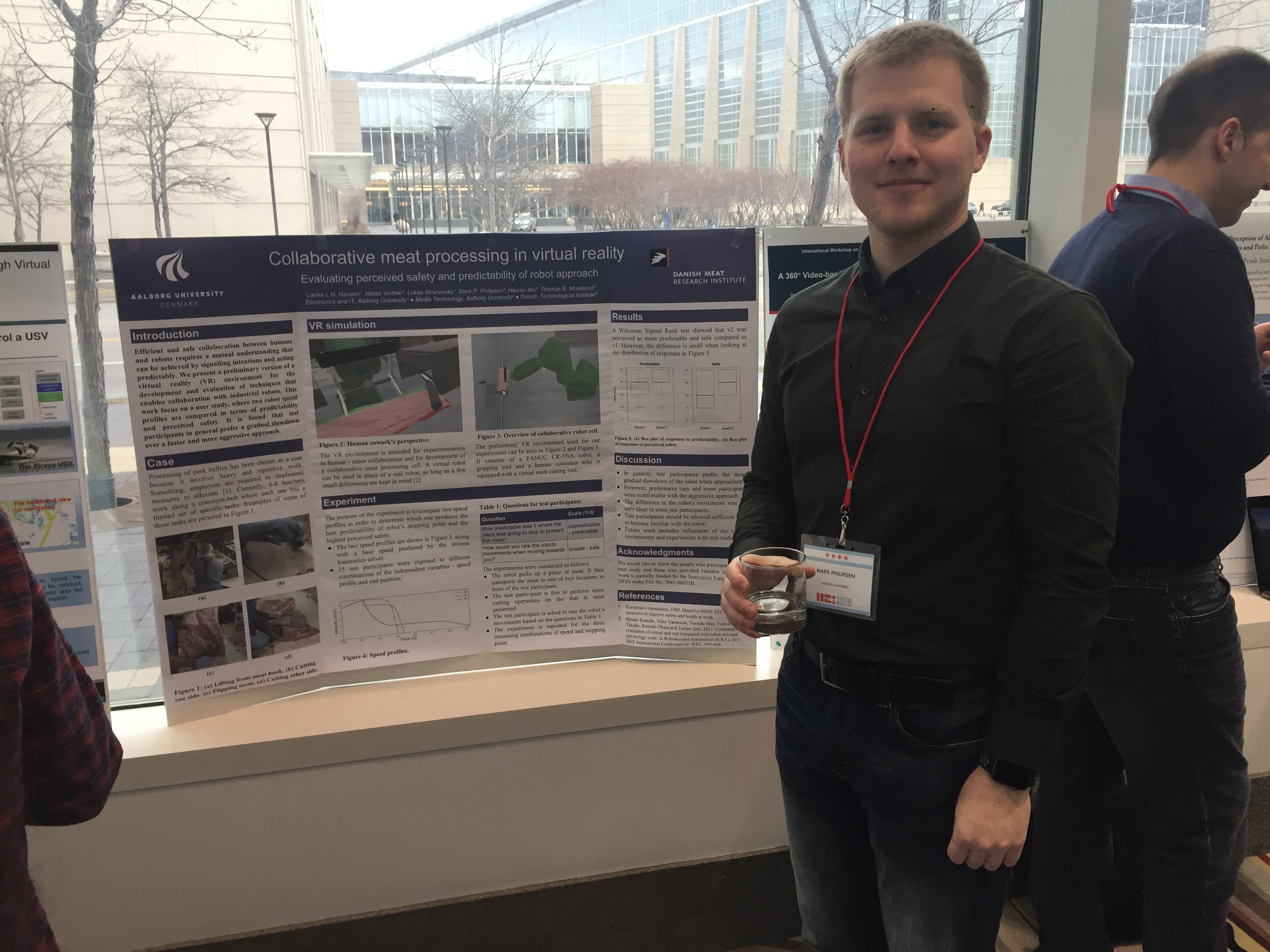Human-Robot Interaction conference in Chicago, 2018
Posted on Sun 29 April 2018 in research
I attended the 2018 conference on Human-Robot Interaction. The primary reason was to present work done by VGIS students I had supervised during the autumn semester of 2017. Secondly, to gather inspiration for the new Grand Solutions - Augmented Cellular Meat Production (ACMP) project I was part of. Not that I would spend much more time on the HRI aspects but AAU had just acquired a new PhD that would work on this aspect of the ACMP project and I would like to be somewhat up-to-date on the topic.
General take-ways
- Test on the actual end users - use user study experts for this
- Precise knowledge of objects and actors locations is needed - how do we get that?
- Collaborating with real industrial robots - No one at HRI was looking specifically at this
- Possible collaborator in how robots are received in the workplace - Institut for Uddannelse og Pædagogik(http://edu.au.dk/)
- VR is seen as mature, AR not yet but will be soon and is therefore also more interesting from research point of view
- Nice explanations of mixed reality - "Making the hidden visible" or "exposing the hidden"
- Nothing is completely autonomous - the degree of interaction just varies
- Infrastructure is essential for efficient collaboration e.g. lane lines and signals
- Adapt the systems to the expertise level of the user to improve efficiency and avoid frustration - measure expertise based on tracks (shows clear difference)
Keynotes
Steve Cousins' Keynote - Building a Service Robotic Business, Challenges from the Field
- Use case is key, is it an aspirin or a vitamin
- Robots help avoid monday models
- Danger
- Reduce impact of turnover
- Other things than savings on workers hit the bottomline
- Relay for transport between cells?
David Mindell's Keynote - Autonomy in human environments
- What is autonomy? Never complete autonomy
- Use of infrastructure to facilitate safe and efficient collaboration e.g. TLs People <-> robots <-> infrastructure <-> people
- Detect expertise from precise tracks
- Knowledge of precise location is essential
Specific Research
Titles and short summaries of presented works that would be worth looking further into.
- Teaching users to remote control robot using scaffolding. dynamic curves controls the amount of scaffolding. Used to train a human operator, could it be used the other way?
- "Its all in your head". Priming the expectations of the user. Large impact on the perception of the product.
- Projecting robot intentions into the physical world. Highlighting the robots next move. Gamification.
- Human-robot handover - Vary based on user experience level. Safety concerns solve by augmenting to show robot capabilities.
- "A framework for robot generated mixed reality deixis" - New classes are possible in MR, annotations with e.g. arrows
- "Transfer learning for robot navigation" - RNN learns to control robot through forrest. Sim-to-real.
- "Training robots to acquire new skills" - RL PyBullet
- Task planning in VR
- Exposing the hidden
- "Learning grasp from kinaesthetic demonstrations and mental simulations" - map between object and contact point, model hand/tool, evaluate grasp before execution
- "Designing gripper by looking at what/how humans grasp" - record video of grasps, categorise, rank
- "Teaching users to remote control robot using scaffolding" - dynamic curves controls the amount of scaffolding. Used to train a human operator, could it be used the other way?
its all in your head
Priming the expectations of the user Main poster session

"Virtual, Augmented, and Mixed Reality for Human-Robot Interaction" workshop poster session with VGIS students' poster
